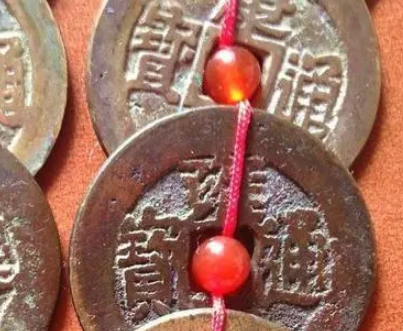In the tradition of ancient China, the gift of New Year's money carried profound meanings. It represented not only a material exchange, but also an emotional transfer and a wish for a better life. Surprisingly, the New Year's money in ancient times was not the currency we know today, but rather amulets with special significance. This article aims to reveal the mysteries of ancient New Year's money through the analysis of relevant historical materials.

In ancient times, it was believed that the new year might bring new disasters and illnesses. Therefore, to protect children from evil, parents would give them New Year's money on New Year's Eve and the first day of the new year. This money was usually wrapped in red paper, as red is considered a auspicious color in traditional Chinese culture, believed to ward off evil.
Inside these red envelopes, however, were not the currency we understand today, but rather amulets known as "Yashengqian". These amulets, usually made of metal, came in various shapes, resembling swords, shields, or auspicious animals. These Yashengqian were believed to possess the power to ward off evil, protecting children from harm in the new year.
In addition to Yashengqian, people in some regions would also include auspicious items such as grains, red dates, and peanuts in the New Year's money. These items not only symbolized abundance and fertility, but also carried the wish that children would grow up healthy and strong in the new year.
Overall, the gift of New Year's money in ancient times was a profound custom. It not only reflected the care and blessings people had for their children, but also revealed the ancient people's expectations and wishes for the new year. Although the form of New Year's money has changed over time, its cultural significance and beautiful symbolism still deserve to be inherited and carried forward.
Disclaimer: The above content is sourced from the internet and the copyright belongs to the original author. If there is any infringement of your original copyright, please inform us and we will delete the relevant content as soon as possible.
































